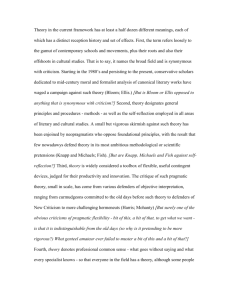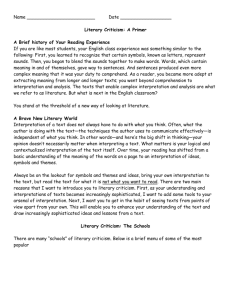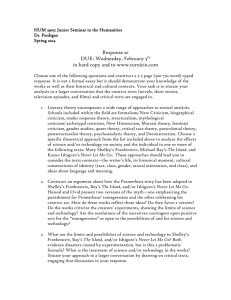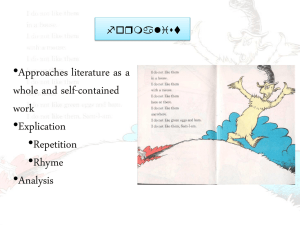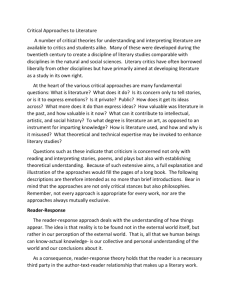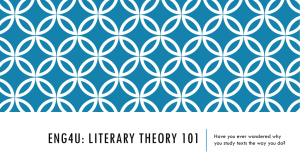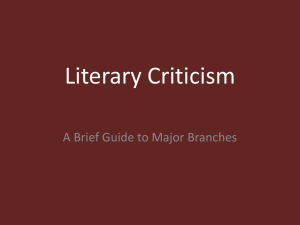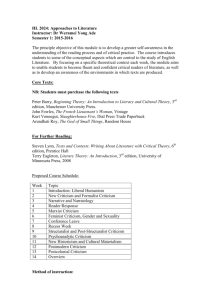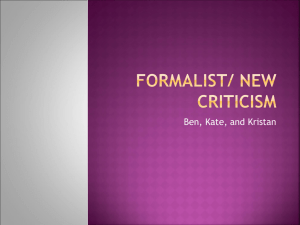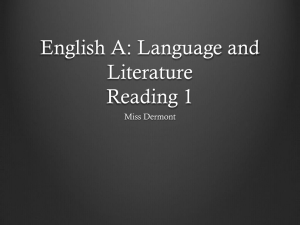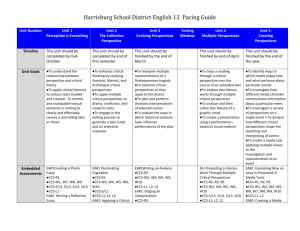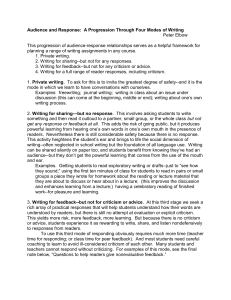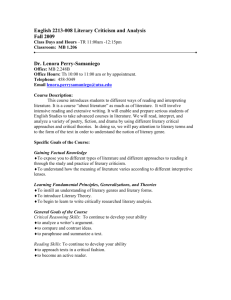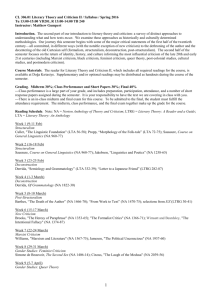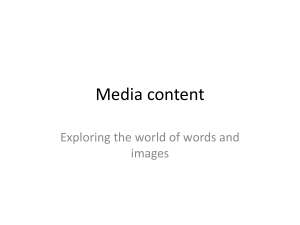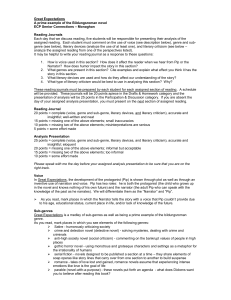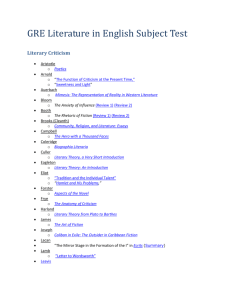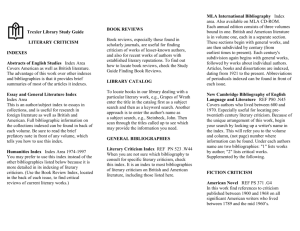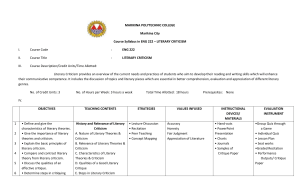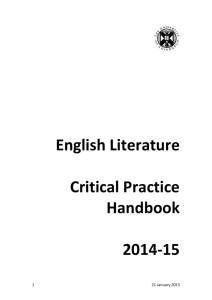Literary Criticism Some assumptions and accompanying questions
advertisement
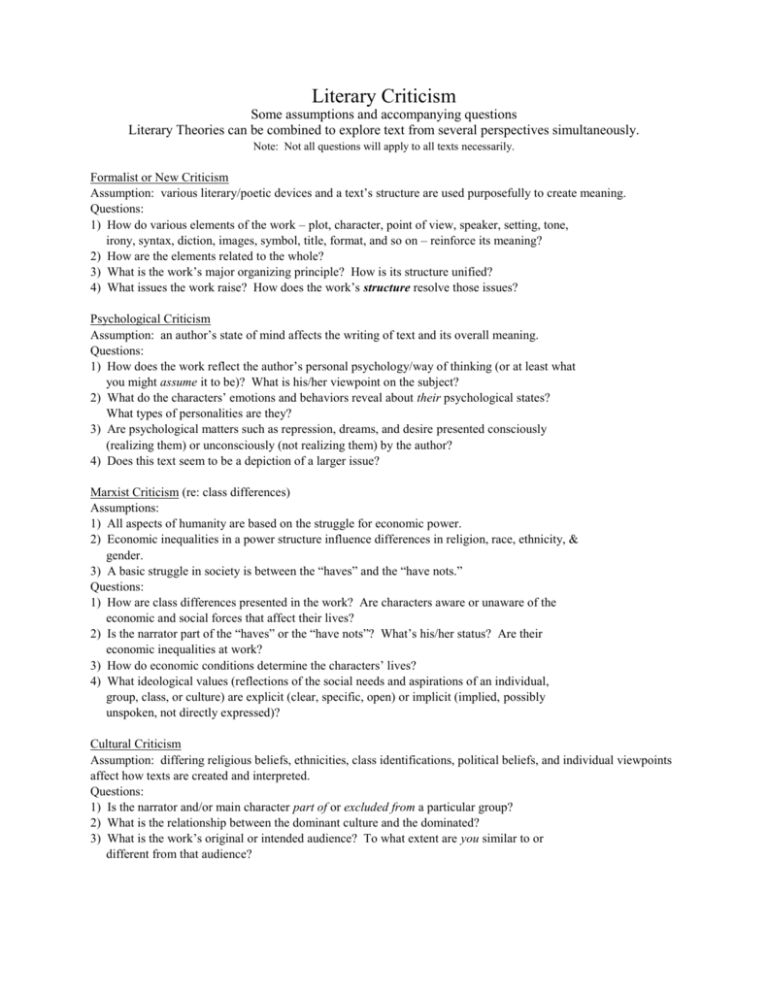
Literary Criticism Some assumptions and accompanying questions Literary Theories can be combined to explore text from several perspectives simultaneously. Note: Not all questions will apply to all texts necessarily. Formalist or New Criticism Assumption: various literary/poetic devices and a text’s structure are used purposefully to create meaning. Questions: 1) How do various elements of the work – plot, character, point of view, speaker, setting, tone, irony, syntax, diction, images, symbol, title, format, and so on – reinforce its meaning? 2) How are the elements related to the whole? 3) What is the work’s major organizing principle? How is its structure unified? 4) What issues the work raise? How does the work’s structure resolve those issues? Psychological Criticism Assumption: an author’s state of mind affects the writing of text and its overall meaning. Questions: 1) How does the work reflect the author’s personal psychology/way of thinking (or at least what you might assume it to be)? What is his/her viewpoint on the subject? 2) What do the characters’ emotions and behaviors reveal about their psychological states? What types of personalities are they? 3) Are psychological matters such as repression, dreams, and desire presented consciously (realizing them) or unconsciously (not realizing them) by the author? 4) Does this text seem to be a depiction of a larger issue? Marxist Criticism (re: class differences) Assumptions: 1) All aspects of humanity are based on the struggle for economic power. 2) Economic inequalities in a power structure influence differences in religion, race, ethnicity, & gender. 3) A basic struggle in society is between the “haves” and the “have nots.” Questions: 1) How are class differences presented in the work? Are characters aware or unaware of the economic and social forces that affect their lives? 2) Is the narrator part of the “haves” or the “have nots”? What’s his/her status? Are their economic inequalities at work? 3) How do economic conditions determine the characters’ lives? 4) What ideological values (reflections of the social needs and aspirations of an individual, group, class, or culture) are explicit (clear, specific, open) or implicit (implied, possibly unspoken, not directly expressed)? Cultural Criticism Assumption: differing religious beliefs, ethnicities, class identifications, political beliefs, and individual viewpoints affect how texts are created and interpreted. Questions: 1) Is the narrator and/or main character part of or excluded from a particular group? 2) What is the relationship between the dominant culture and the dominated? 3) What is the work’s original or intended audience? To what extent are you similar to or different from that audience? Historical Criticism (see How to Read Lit. Ch. 25: “Don’t read with YOUR eyes”) 1) How does the work reflect the period in which it is written? 2) How does the work reflect the period it represents? 3) What literary or historical influences (allusions, models, time period-specific authors) helped to shape the form and content of the work? 4) How important is the historical context (a web of social, cultural, personal, & political factors) of both the work’s and your own to interpreting the work? Biographical Criticism 1) Are there facts about the writer’s life relevant to your understanding of the work? 2) Are characters and incidents in the work versions of the writer’s own experiences? Are they treated facutally or imaginatively? 3) How do you think the writer’s values are reflected in the work? Feminist Criticism (re: relationships between men and women) Assumptions: 1) A pervasively patriarchal society conveys male dominance through the images of women in its texts. 2) Many texts lack complex female characters and deem the female reader as an outsider or requires her to assume male values in terms of perception, feeling, and actions. See, feel, and act like a man! 3) Female characters often reflect and create stereotypical social and political attitudes toward women. 4) Women-written texts may have differing viewpoints than male-written texts. Questions: 1) How are women’s lives portrayed in the work? Do the women in the work accept or reject these roles? 2) Is the form and content of the work influenced by the author’s gender? 3) What are the relationships between men and women? Are these relationships sources of conflict? Do they provide resolutions to conflicts? 4) Does the work challenge or affirm traditional ideas about women? Structuralist/Mythological/Archetypal Criticism (see How To Read Lit Ch. 5: “Where have I seen her before?”) 1) How does the story resemble other stories in plot, character, setting, or use of symbols? 2) Are archetypes presented such as archetypal characters, quests, initiations, scapegoats, or withdrawals and returns? Are certain recurring images present? 3) Does the protagonist undergo any kind of transformation such as movement from innocence to experience (or other) that seems archetypal? 4) Are there any specific allusions to Greek myths, fairytales, Shakespearean works, or Biblical stories that shed light on the text? Reader Response Criticism Assumptions: 1) Readers not only seek meaning from text, but also create meaning from a personal interaction with the text. 2) It is important to the discussion of a text to take into account the reader as well as the reading situation. 3) Readers formulate various interpretations because a text allows a range of acceptable interpretations for which textual support is available. Questions: 1) How do YOU respond to the work? 2) How do your own experiences, circumstances, social ethics, moral values, beliefs, general views of the world, knowledge, and expectations affect your reading, interpretation, and relation to the characters? 3) Read it again all the way through. Do you respond in the same way to the work after more than one reading?

